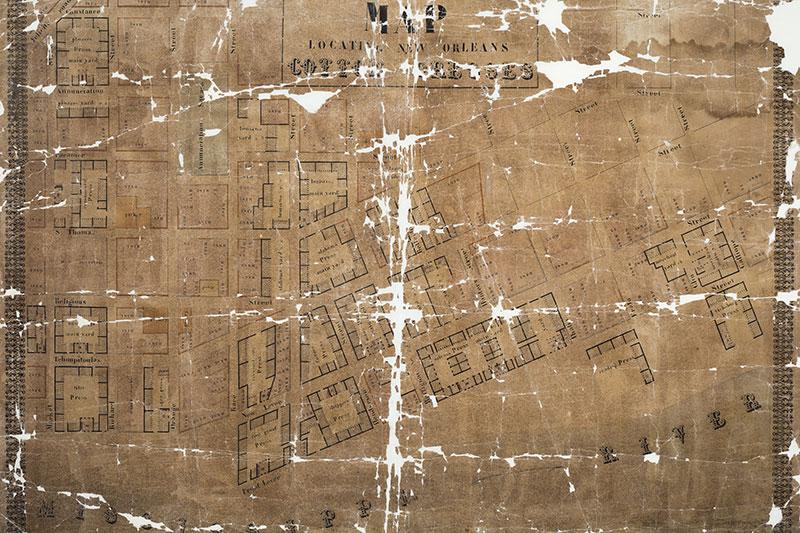Gallery holds piece of cotton history
Two 150-year-old maps detailing the location of New Orleans cotton presses in 1860 have been given new life thanks to the fast thinking of Leon Miller, head of the Louisiana Research Collection at Tulane Howard-Tilton Memorial Library.
Miller believes that the maps are the only existing ones of the Cotton Press District at that time. In the cotton manufacturing process, raw cotton was ginned of its seeds, and then formed into uniform bales for shipping and marketing.
In 2009, these maps were set to be discarded after they began to crumble as a result of the aging paper’s acidic breakdown. In fact, Miller said the maps were already in a trash can when he found them. But he could not stand to see the historic maps tossed out.
“While copies may exist in private hands, we believe these may be the only publicly available copies of maps documenting a crucial part of the South’s economy at the outbreak of the Civil War.”
Leon Miller, head of the Louisiana Research Collection
“The maps were in hundreds of pieces,” said Miller. “But once I found one of the cartouches, I knew they would be something worth saving.”
A cartouche, Miller explained, is an inscription that provides an explanation of what’s shown on a map as well as its title, cartographer and date.
Once Miller was able to use the cartouches to identify the maps, he contacted archives throughout Louisiana and searched online databases for copies to no avail.
“While copies may exist in private hands, we believe these may be the only publicly available copies of maps documenting a crucial part of the South’s economy at the outbreak of the Civil War,” said Miller.
It took several months for a conservator to de-acidify the maps and mix and match the pieces, but they now hang as a symbol of second chances in the Victor H. and Margaret G. Schiro Reading Room in Jones Hall.
Editor's note: This article appeared first in the December 2017 issue of Tulane magazine.

